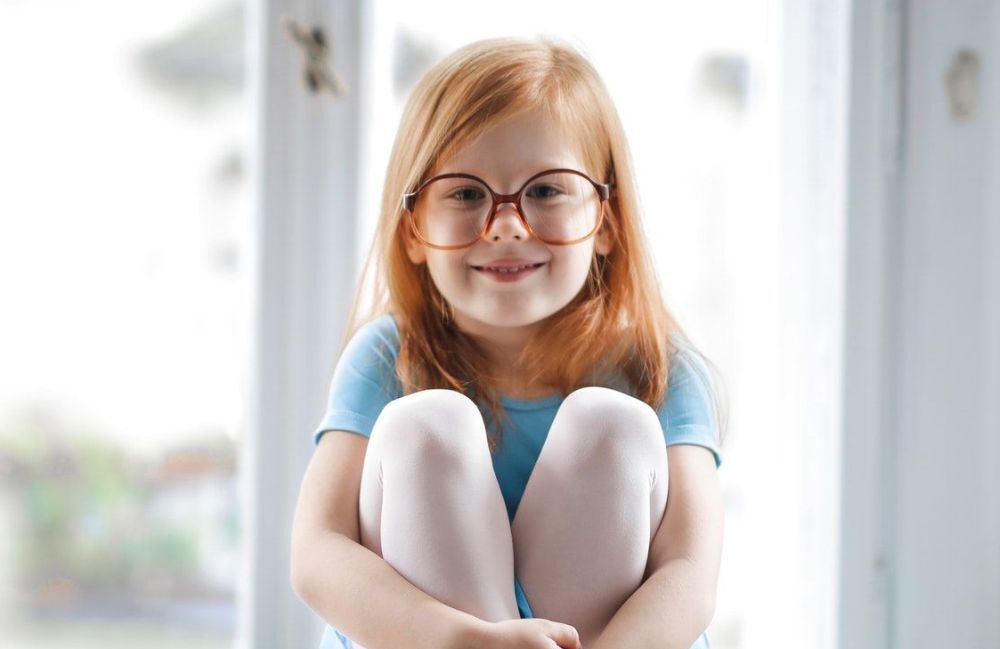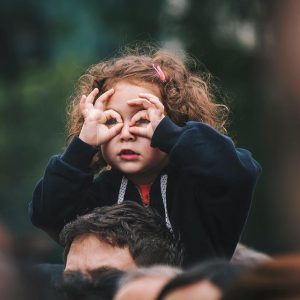Why is vision important in children? Because 80% of what a child learns is through their eyes.
It’s critical for every child to have healthy vision for their school success, social development and well-being.
Their vision is a valuable source of information about the world they live in. As a result, an uncorrected vision condition may obstruct their capacity to study and achieve their full potential.
Signs of vision problems
How do you know if your child has a vision problem?
Watch for these signs:
- Headaches
- Itchy eyes
- Squinting
- Tiring when reading
- Excessive blinking or tearing
- Sitting close to the TV or computer screen
Remember, just because your child has 20/20 vision, doesn’t mean they don’t need to see an eye doctor. Children should undergo a comprehensive eye exam every year to see whether their vision has changed or if they have any underlying eye problems.
Here are the top questions parents have asked about their child’s vision:
Q1: At what age should a child have eye exams?
A: According to the American and Canadian Optometric associations, it’s recommended that a child’s first eye exam occur between the ages of 6-12 months.
After which, a child should return at the age of 3 or as directed by their eye doctor.
Once a child begins school, they should undergo an eye exam annually.
Q2: If my child passes their school vision screening, do they need an eye exam?
A: Yes. School vision screenings are insufficient since they are only intended to detect a few visual problems, such as nearsightedness (myopia).
Up to 43% of children can pass a simple vision screening exam, even if they have vision problems,
During a comprehensive eye exam, an eye doctor can assess a child’s eye and vision health, as well as visual abilities such as depth perception and tracking.
Because a child’s visual abilities are so important to academic success, eye doctors advise that children get an eye exam before starting school and every year after that.
Q3: What are the most common eye problems in children?
A: The most common vision problems for children are refractive errors, amblyopia, strabismus, or vision loss.
Children are more affected by refractive defects, such as myopia, hyperopia, and astigmatism, than by other vision issues.
- Astigmatism – causes blurry vision at all distances due to an irregularity in the shape of the lens of the eye. Children with myopia or hyperopia are more likely to have astigmatism.
- Hyperopia – nearby objects appear blurry, but faraway objects appear normal.
- Myopia – distant objects appear blurry, but objects close up appear normal.
- Amblyopia – also called ‘lazy eye’ refers to a condition in which the connections between the eye and the brain are not functioning properly, resulting in decreased vision in an otherwise normal eye. It’s the most common cause of vision loss in children.
- Strabismus – also known as cross eyes, is any misalignment of the eyes and can be a cause of amblyopia.
- Vision loss – the lack of vision or a vision loss that cannot be corrected with glasses or contact lenses.
If you feel your child may have any of these above, schedule an eye exam with an eye doctor near you.
SEE RELATED: Should My Child Have An Eye Exam?
Q4: Can amblyopia and strabismus be treated?
A: There is a considerable chance of complete correction when amblyopia and strabismus are discovered early and treated properly.
Depending on the severity of the strabismus, surgery to align and straighten the crossed eye may be required.
To treat amblyopia, your eye doctor may utilize eye patching, glasses, or vision therapy to help strengthen the weak eye and train the eyes to work together.
Q5: What is vision therapy?
A: Vision therapy is a customized eye training program that teaches the brain and eyes to work together again.
Vision therapy is used to treat a variety of eye problems, including focusing, tracking and eye alignment. To reinforce progress, vision therapy employs instruments such as customized glasses or prisms, as well as eye exercises.
Q6: Every year my daughter’s myopia gets worse, is there a way to stop it?
A: According to research, the progression of myopia can be delayed or stopped during childhood.
Some of the procedures used to address myopia include orthokeratology (ortho-k), multifocal glasses and contact lenses, and atropine eye drops.
Q7: How can I get my child to wear their glasses?
A: It can take time for a child to adjust to wearing glasses. Purchasing glasses with an integrated headband can help keep the glasses in place.
It’s also a good idea to put them on your child on a regular basis so that he or she becomes accustomed to wearing them.
Sometimes it’s not the way the glasses feel, but rather that they have an improper prescription causing a child to refuse to wear them. Revisit their eye doctor to make sure the glasses are actually a good fit, both physically and visually.
Q8: At what age can my child wear contact lenses?
A: Most children can start to use contact lenses from about age 8, although there is no set age for children to begin using contact lenses.
Contact lenses are worn by over 4 million children under the age of 18 in the United States.
Even some infants are given contact lenses, because of congenital cataracts or other eye problems.
LEARN MORE: Guide to Children’s Eye Exams
Schedule an eye exam with an eye doctor near you, to ensure that your child can see properly and reach their full potential.


